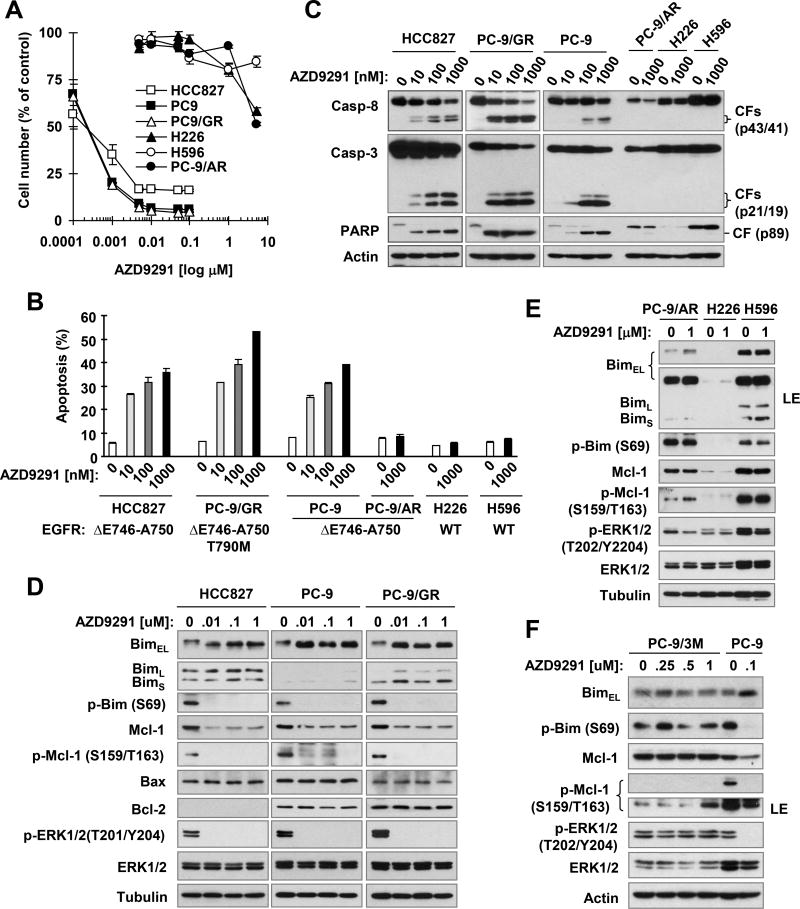Fig. 1. AZD9291 effectively decreases cell survival (A) and induces apoptosis (B and C) with suppression of ERK phosphorylation and modulation of Bim and Mcl-1 levels (D–F) in sensitive EGFR-mutant NSCLC cell lines.
A, The indicated NSCLC cell lines were exposed to different concentrations of AZD9291 for 3 days. Cell numbers were estimated with SRB assay. The data are means ± SDs of four replicate determinations. B and C, The indicated cell lines were treated with different concentrations of AZD9291 for 30 h and harvested for annexin V staining followed with flow cytometric analysis to detect apoptosis (B) and for Western blotting to detect protein cleavage (C). Data in B represent means ± SDs of duplicate determinations. EGFR mutation status for each tested cell line is indicated (B). D–F, The indicated cell lines were treated with different concentrations of AZD9291 for 8 h and then harvested for preparation of whole-cell protein lysates and subsequent Western blotting to detect the given proteins. WT, wild-type; CF, cleaved form; LE, longer exposure.

